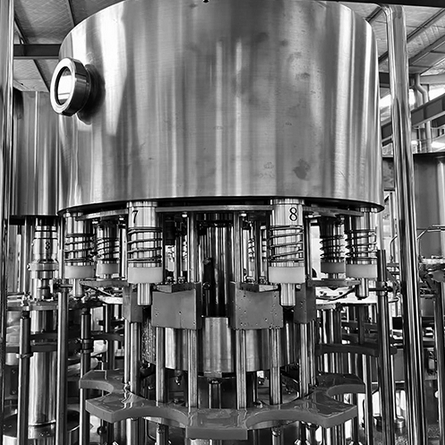In the fast – paced modern life, bottled water has become a necessity. As the core equipment in bottled water production, bottled water filling machines directly affect production efficiency, as well as product quality and safety.
These highly automated machines integrate multidisciplinary technologies such as mechanics, electronics, and pneumatics to accurately fill processed water into various containers. Comm
on flling methods include atmospheric pressure filling, negative pressure filling, and isobaric filling. Atmospheric pressure filling relies on the gravity of the liquid and is suitable for low – viscosity, non – carbonated liquids. Negative pressure filling creates a vacuum in the container first and then uses atmospheric pressure to fill the liquid, effectively reducing the contact between the liquid and air and preventing oxidation. Isobaric filling is mainly used for carbonated beverages. It first fills the container with gas at the same pressure as the liquid storage tank to equalize the pressure inside the bottle and the tank, and then the liquid is filled into the container under the action of gravity, avoiding the escape of gas in carbonated beverages and ensuring product taste and quality.
Modern filling machines have remarkable advantages. In terms of efficiency, advanced models can fill hundreds or even thousands of bottles per minute. After a well – known brand introduced a high – speed filling machine, its daily output increased by 30%, effectively reducing production costs per unit. In terms of precision, high – precision metering systems ensure minimal errors in filling volume, guaranteeing product consistency. Meanwhile, the machines can quickly change molds, flexibly adapting to various bottle shapes and capacities.
Hygiene and safety are equally crucial. Filling machines are usually made of food – grade stainless steel, which is easy to clean and corrosion – resistant. They are equipped with comprehensive cleaning and disinfection systems, and high – end models even adopt aseptic filling technology, enhancing product safety and shelf life.
With the development of science and technology, filling machines are moving towards the direction of intelligence, energy – conservation, and environmental protection. Artificial intelligence and Internet of Things technologies enable automatic fault diagnosis and early warning, and data interaction with the production management system facilitates decision – making. Efficient drive systems and water circulation treatment systems reduce energy and water consumption, and environmentally friendly designs minimize pollution. Bottled water filling machines will continue to drive the development of the industry through technological innovation.

